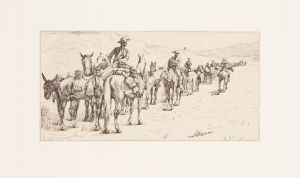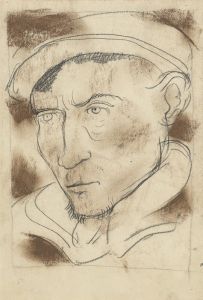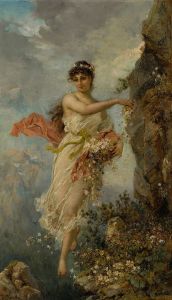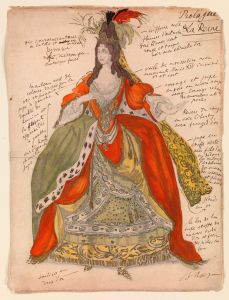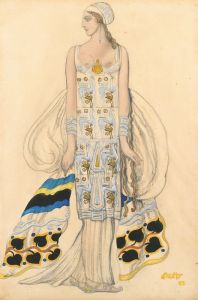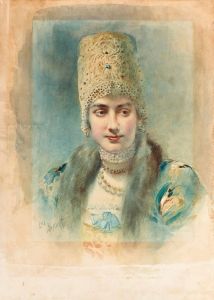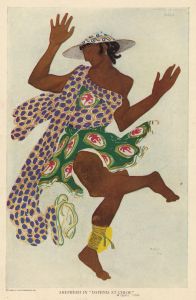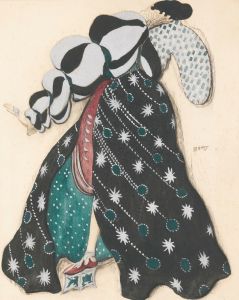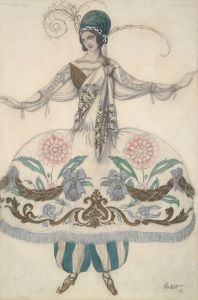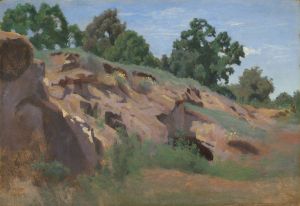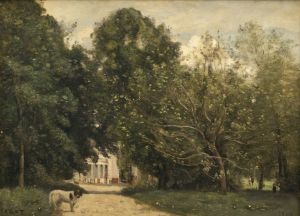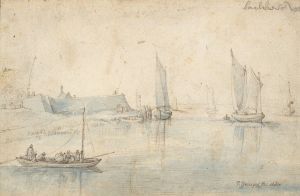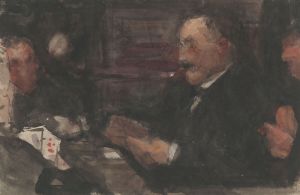
Cheval s’abreuvant
A hand-painted replica of Léon Bakst’s masterpiece Cheval s’abreuvant, meticulously crafted by professional artists to capture the true essence of the original. Each piece is created with museum-quality canvas and rare mineral pigments, carefully painted by experienced artists with delicate brushstrokes and rich, layered colors to perfectly recreate the texture of the original artwork. Unlike machine-printed reproductions, this hand-painted version brings the painting to life, infused with the artist’s emotions and skill in every stroke. Whether for personal collection or home decoration, it instantly elevates the artistic atmosphere of any space.
Léon Bakst, a renowned Russian painter and scene and costume designer, is best known for his work with the Ballets Russes, a groundbreaking ballet company that revolutionized the performing arts in the early 20th century. Among his diverse body of work is the painting "Cheval s’abreuvant," which translates to "Horse Drinking" in English. This piece exemplifies Bakst's unique artistic style, which often combined elements of realism with a vivid use of color and a keen attention to detail.
"Cheval s’abreuvant" captures a moment of serene natural beauty, depicting a horse in the act of drinking water. Bakst's portrayal of the horse is both dynamic and lifelike, showcasing his ability to render animal forms with anatomical precision. The painting reflects Bakst's interest in capturing movement and life, a characteristic that is evident in much of his work for the stage, where he sought to create vibrant, living tableaux.
The composition of "Cheval s’abreuvant" is marked by its balanced use of color and light. Bakst employs a palette that highlights the natural tones of the horse and its surroundings, creating a harmonious scene that draws the viewer into the tranquil moment. The use of light in the painting is particularly noteworthy, as it enhances the texture of the horse's coat and the reflective quality of the water, adding depth and realism to the scene.
Bakst's background in the arts was extensive and varied. Born in 1866 in Grodno, which was then part of the Russian Empire, he studied at the St. Petersburg Academy of Arts and later in Paris. His exposure to different artistic movements and his collaborations with other artists and designers influenced his style, which often incorporated elements of Art Nouveau and Orientalism. These influences can be seen in the decorative quality of his work, including "Cheval s’abreuvant," where the attention to detail and the stylized forms reflect a blend of artistic traditions.
While Bakst is primarily celebrated for his contributions to the world of theater, particularly through his work with Sergei Diaghilev and the Ballets Russes, his paintings also hold a significant place in his oeuvre. "Cheval s’abreuvant" is a testament to his versatility as an artist, demonstrating his ability to capture the essence of his subjects, whether on canvas or in the theater.
The painting is part of a broader collection of works by Bakst that explore themes of nature and movement. His ability to convey emotion and narrative through visual art made him a pivotal figure in the transition from 19th-century realism to the more expressive forms of the 20th century. Bakst's legacy continues to influence artists and designers, and his works remain celebrated for their innovative spirit and artistic excellence.
In summary, "Cheval s’abreuvant" by Léon Bakst is a fine example of the artist's skill in capturing the beauty and vitality of the natural world. Through his masterful use of color, light, and form, Bakst creates a scene that is both realistic and imbued with a sense of tranquility, reflecting his broader artistic vision and his contributions to the art world.





